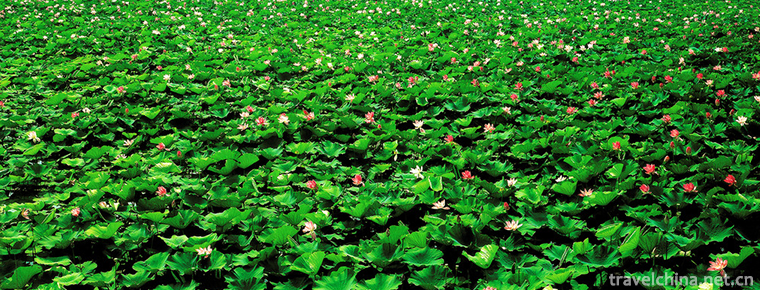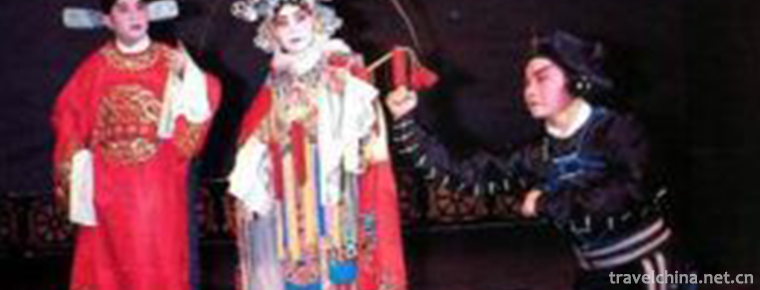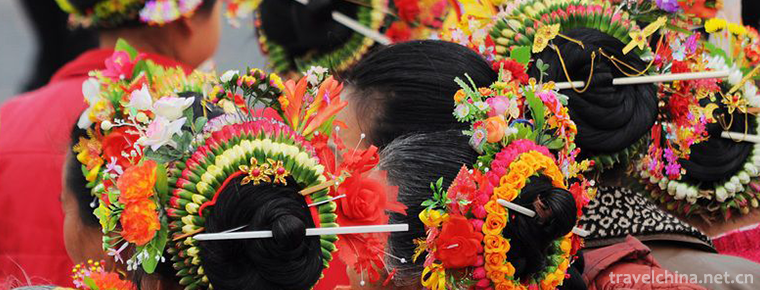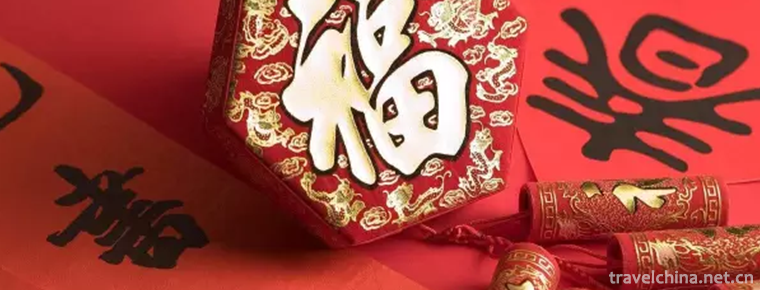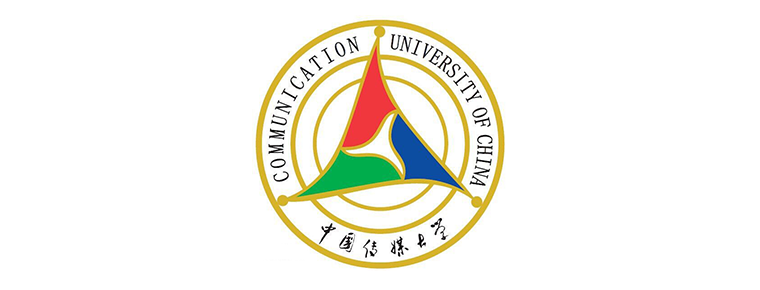Bamboo and Wood Instrument Music of Li Nationality
Bamboo and Wood Instrument Music of Li Nationality
The traditional instrumental music of Li Nationality is based on abundant bamboo and wood resources, including solo music, ensemble music, song and dance music, sacrificial music and eight kinds of music. There are no less than 40 kinds of musical instruments of Li Nationality, including solo drum, tinkling, bow of mouth, mouthworship, nostrils, burning bar, etc.
Traditional instrumental music of Li nationality originated in Baoting Li and Miao Autonomous County of Hainan Province. In the early Song Dynasty, Taiping Huanyu Ji said, "Qiongzhou gathers to push drums and songs." According to legend, Li traditional instrumental music was most popular in the Qing, Kang and Qian Dynasties.
Li traditional instrumental music is the treasure of the national instrumental music treasure house of the motherland. Bamboo and wood instrumental music contains the original music characteristics, flexible and free structure, smooth melody and simple tone. It combines many elements of Li traditional culture, aesthetic awareness, folk customs and so on, and is popular with Li people.
On June 7, 2008, Li traditional musical instruments were approved by the State Council and listed in the second batch of national intangible cultural heritage list.
historical origin
Li's bamboo and wood instrument music has a long history. Song Taiping Huanyu Ji records: Qiongzhou Li people "play drums and play Sheng for pleasure"; Song Guihai Yuheng Zhi contains Li people "gather and dance with vertebral drums"; Qing people Zhang Qingchang's "Li Qi Seeing and Hearing" also contains: "Men and women unmarried, gather together in the fields every spring and summer, men's harpsichord (i.e. mouth bow), women's nose groove, and sing Li songs." According to relevant information, the earliest musical instrument is the solo drum. Ancient folk songs of the Li Nationality tell us that in ancient times, when the thunder Lord knocked down trees and burned them into holes, the ancestors of the Li Nationality attacked the holes and called for hunting. Later, people covered the holes with cowhide or deerskin and knocked loudly to attract people, offer sacrifices and use musical instruments. Dingdongmu is also an early percussion instrument. In ancient times, the Li people cut down the mountain orchid to drive the mountain pig, and later developed into a percussion instrument for dancing and entertainment.
Li people's proverb: the song does not stop, the flute does not stop. This proverb reflects that the folk musical instruments of the Li nationality have as long a history as the folk songs.
artistic characteristics
The original Li traditional instrumental music is full of primitive music color. Traditional music originated in primitive social life, retaining the rhythm of primitive life, showing the primitive life of the Li people, such as the solemn scenes of primitive worship and sacrificial activities, such as the grand voice of the solo drum and the simple drum score. The clangorous and melodious tinkle makes people feel like they are in the primitive mountain orchid garden. The soft and euphemistic nostrils, the soft and lingering chords, and the whispers of the lover, the pure and bright clatter, the broad and melodious worship, the cave spoon (burning bar), present the rich and colorful life scenes of the Li people, such as labor, festivals, joy and so on.
The traditional instrumental music of Li nationality has the characteristics of simplicity and simplicity. Qupai structure is mostly a single melody, which is repeated many times on the basis of a tune, only the speed changes in the repetition, and the repetition method deepens people's musical impression. In the aspect of mode scales, most of them are five-tone scales and official scales. The tunes are mainly composed of repetition of the same scale and second scale. The melody fluctuates little, and the rhythm and rhythm are generally more regular.
Representative works
Li instrumental music has had a brilliant past, such as the Li instrumental music "Tingdong" in 1957 to participate in the first national concert performance, received good reviews; Li musician Lu Yuchang played the "worship" instrument in 1980 to participate in the national minority literary and artistic concert performance, continuous blowing for more than 20 minutes without breathing, won full applause. The musician Huang Hui was recruited by Guangdong Nationality Song and Dance Troupe because of the gene of blowing chirp. His playing chirp music "Meeting in Shanlanyuan" was invited to play in Singapore, France, Spain, Italy and other countries from 1984 to 1992, and was well-known both at home and abroad.
Inheritance significance
The traditional instruments and music of the Li nationality are unique in the music palace of the motherland. Such instruments as Dingdongmu, nose chop, mouth bow, chirp, and scoop (burning bar) are rare in China. Many of the music is unique to the nation. It enriches the treasure house of the motherland's instrumental music and presents the diversity of the motherland's music culture. Under the impact of fashion music, the traditional instrumental music of the Li nationality is declining, and the folk musicians are also green and yellow, and the traditional music is also in danger of losing its transmission. At the same time, we should comprehensively and thoroughly collect and record the traditional music in order to preserve the heritage and vigorously cultivate the inheritors to avoid the death of artists. Strengthen research, effectively carry out the reform of traditional musical instruments, improve their expressiveness, adhere to the use of various literary and artistic activities, promote and display the unique strength of traditional music.
Li's musical instruments have their own value. Their origin, development and final formation combine many information of national history, production, life, customs and customs, and vividly reflect the cultural traditions of the nation and the region. It provides important historical materials for anthropology, ethnology and folklore, especially for the study of music culture.

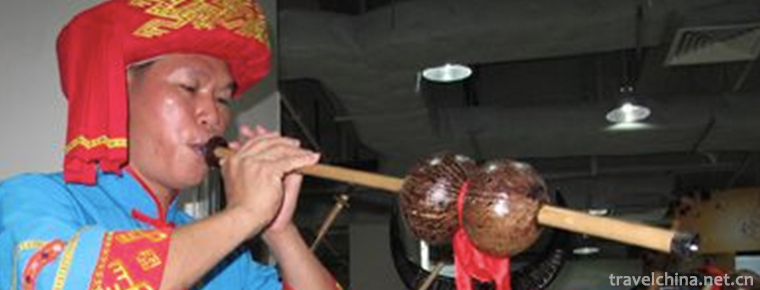
-
Mount Longhu Scenic Area
Located in Yingtan City, Jiangxi Province, the Longhu Mountain Scenic Area is 18 kilometers away from the city center. It consists of six scenic spots: Xianshuiyan, Longhu Mountain, Shangqing Palace.
Views: 178 Time 2018-12-08 -
Cheng Yang eight Zhai
Chengyang Bazhai is located in Sanjiang Dong Autonomous County, Liuzhou City, Guangxi, 19 kilometers away from Sanjiang County. There are eight natural villages in Chengyang Bazhai, commonly known as .
Views: 94 Time 2019-01-05 -
Dalian Sun Asia Ocean World
China's Romantic Marine Theme Paradise and Romantic Dalian Tourist Resort - Dalian Sanya Marine World. Located on the west side of Xinghai Square and in Xinghai Park, facing the sea and adjacent to ya.
Views: 170 Time 2019-01-07 -
Weishan Lake National Wetland Park
Weishan Lake National Wetland Park, located in the southern part of Weishan County, Jining City, Shandong Province, is less than 3 kilometers away from the urban area..
Views: 195 Time 2019-02-22 -
Qiyang minor
Qiyang in the north of Yongzhou is a kind of traditional opera widely spread. After a long period of evolution and development, it has formed a traditional folk art form with strong local color,.
Views: 133 Time 2019-06-10 -
Brewing Techniques of Qingxu Old Vinegar
The brewing process of Qingxu aged vinegar is complex. After the main steps of ingredients, steaming, manual turning of solid acetic acid, high temperature fumigation, high density leaching, aging and.
Views: 247 Time 2019-06-11 -
Uygur Medicine
Uygur Medicine magazine provides medical workers with good opportunities for education, continuing education and academic exchange platform, and is committed to improving the comprehensive quality of .
Views: 286 Time 2019-06-26 -
The Custom of Hupu Women
Hupu women's custom is a traditional folk custom in Quanzhou City, Fujian Province. Hupu women are mainly distributed in the communities of Hupu, Jinzai, Houpu and Dongmei in Donghai Street, Fengze Di.
Views: 196 Time 2019-07-09 -
Couplet Custom
Couplet is a couplet inscribed on the pillar of the couplet, also refers to the couplet, is a unique form of literature and art in China. The custom of couplets originated from the dual phenomenon of .
Views: 188 Time 2019-07-14 -
Chizhou University
Chizhou college is Anhui Province Full time general Undergraduate Colleges It's the only one in China. Hui Style Architecture The style of colleges and universities is the only one in Anhui colleges a.
Views: 395 Time 2019-11-09 -
Communication University Of China
Communication University of China ( Communication University of China Referred to as "Zhong Chuan", located in the capital city. Beijing Yes. Ministry of Education of the People's Republic o.
Views: 123 Time 2019-12-03 -
Animal resources in Neijiang
The animal resources in Neijiang are mainly livestock, poultry and some wild animals. Domestic animals include mammals, birds, insects, fish and domestic wild animals. There are pigs, cattle, sheep, rabbits and a small number of horses, mules and donkeys.
Views: 316 Time 2020-12-16



